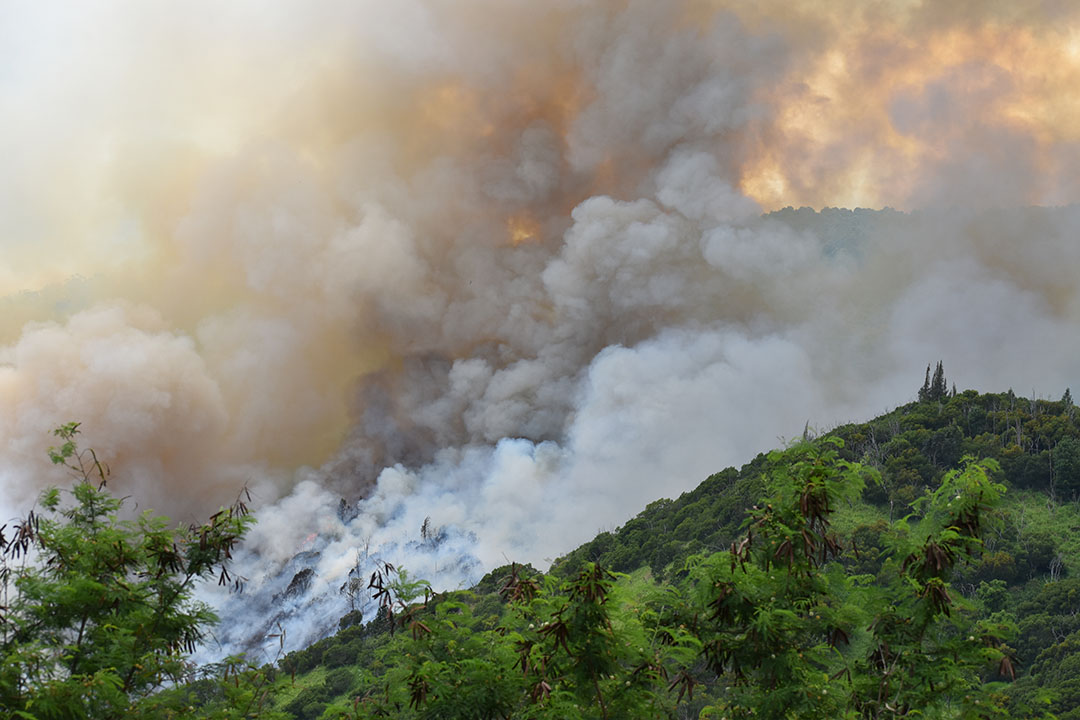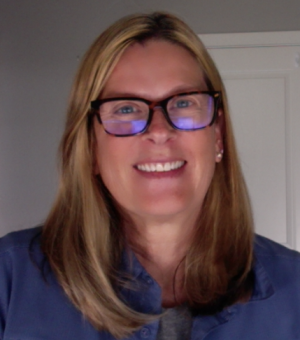As each day passes, the toll from the Maui wildfires—already the deadliest wildfires in the United States in more than a century—becomes increasingly devastating. At press time, more than 100 people were confirmed dead, thousands were missing or displaced and losses were estimated at nearly $6 billion. Historic cities like Lahaina, once the royal capital of Hawaii, were almost entirely destroyed with residents diving into the ocean to escape the flames. Hawaii Governor Josh Green called the wildfires “the largest natural disaster we’ve ever experienced.”
Meanwhile, experts searched for clues to its cause—many pointing to a perfect storm of downed power lines, gale-force hurricane winds and climate change conditions like severe droughts and rising temperatures.
In a conversation with GW Today, Professor of Geography Lisa Benton-Short discussed how climate change sparked the wildfires and why communities around the world should prepare for more extreme environmental events.
Q: Can you help put these wildfires into context? Just how devastating are they?
A: They’re pretty catastrophic. And they’re catastrophic because fires of this magnitude are something that Hawaii has never really experienced. Unlike a California or a Colorado that have become used to seeing these kind of hazards, Hawaii doesn’t have a deep history of wildfires—at least not at this intensity and ferocity.
Q: What made these fires so much worse than other natural disasters?
A: On one hand, there’s the physical disaster itself—the actual fire and environmental factors that were, in some cases, out of people’s control. Hurricane Dora passed closely by and created winds in excess of 75 miles an hour that moved the fire so quickly.
But there were other factors that contributed—including, for example, land-use changes brought on by economic globalization. A shifting economy has made it less profitable to grow products like pineapples in Hawaii, so farms are essentially laying fallow and invasive grass species have made their way onto the island. Combine that with drought conditions—rainfall is way down in Hawaii—and you have tinder for this fire to erupt.
And there are also human-caused exacerbations. I’m not sure you can prepare for a fire that moves a mile a minute. But their firefighting forces were used to urban fires and, to some degree, smaller wildfires that were not near communities, not a wildfire of this level. And apparently there were problems with communication systems notifying people to evacuate.
Q: Is this the new normal for areas like Hawaii that we don’t usually associate with fire threats?
A: One lesson that we’re learning is that climate change will insert itself in ways that are unpredictable and unanticipated. Think about Europe in the last decade dealing with heat waves it has never experienced before. Think about the atmospheric river phenomenon that hit California this winter and caused massive flooding. California is pretty used to earthquakes and wildfires, but that kind of rainfall was very atypical.
Climate change is not just warming up places. It’s disrupting and destabilizing climate patterns. We’re see these once-in-100-years events—or once-in-500-years—happening more and more frequently. And they are becoming incredibly intense. Australia has experienced disastrous bushfires that burn with such an intensity that they’re like fire tornadoes. California, Colorado and Utah are dealing with devastating new firestorms, and this summer the East Coast has seen the impacts of fires burning in Canada as many cities experienced very poor air quality.
So I think we’re going to see more wildfires in areas with prolonged drought and higher temperatures. And it’s going to be challenging for these places to prepare for the range of issues they’re going to face.
Q: And these disasters and their consequences are directly attributable to climate change?
A: Climate change’s fingerprints are certainly all over them. But it’s just one of many factors. For example, we have uncontrolled urban sprawl putting more and more communities in areas that were once remote. So when fires happen there, they burn not just forests like in Canada but communities too. Even here on the East Coast, we continue to allow developers to build homes along the oceanfront when we know that these are hurricane-prone areas and, with climate change, we should expect to see more hurricanes of greater intensity.
Q: So is the answer to be better prepared for inevitable environmental catastrophes?
A: Being prepared is not an easy task. It’s difficult to generate political will to invest in resources for something that may or may not happen. Cities, states, countries will have to ask themselves how they use limited resources in the most effective way.
That involves identifying who is most at risk for what type of potential disaster so you can stretch your budget to take care of the most vulnerable populations—because, as we’re seeing, that’s most likely who has perished in Hawaii.
Q: Where does Hawaii go from here? How do you recover from a disaster like this?
A: It’s going to be a long process. Often times there is a rush to rebuild and bring back exactly what was there before so you look resilient. But I think resilience comes from smart planning and smart design, from taking the time to hear from the community about what they need.
My hope is that as recovery turns into rebuilding, conversations around equity are front and center. I’m hoping there are opportunities to create affordable housing so all of the original residents have a place to come back to. Hopefully they can incorporate best practices around rebuilding like minimizing the use of energy and taking advantage of green canopy that provides shade and cools buildings.
But when communities are devastated like this, it’s hard to see those more thoughtful, longer-term perspectives. The immediate need to rehouse is just so urgent.



